Using the UltraCOOL probe / SuperCOOL probe, the sensitivity of the measurement is several times higher than traditional room temperature probes because the detection coil and preamplifier are cooled to cryogenic temperatures, drastically lowering thermal noise. The auto-tuning unit can be used with a wide range of continuous measurements because it supports automatic tuning and matching.
JEOL offers three types of cryogenic probes for solution NMR:
- UC: UltraCOOL probe
- Supercool Marvel (SCO) Open-type
- SCC: MARVEL SUPERCOOL closed-type
Every probe can regulate the temperature of the sample over a very large range, from -40 °C to 150 °C. To make probe exchange easier, the Probe Arm and Probe Lifter are optional add-ons.
Features
Source: JEOL USA, Inc.
| |
Type |
Cooling
by |
Sample Coil
Temperature |
Features |
| UltraCOOL |
UC |
He gas |
≒20 K |
Ultra high sensitivity due to cryogenic capability |
SuperCOOL
MARVEL |
SCC |
He gas |
≒50 K |
About 1/4 of the running cost of UltraCOOL probe
No need to fill the cooling system with liquid nitrogen
Higher sensitivity than the open type |
| SCO |
Liquid
nitrogen |
≒77 K |
Reasonable installation and running costs
Uses liquid nitrogen as coolant
Liquid nitrogen can be refilled during NMR measurement |
UltraCOOL Probe
Both stable high-temperature measurement, required for the analysis of polymers and other materials, and ultra-sensitive measurement, a characteristic of cryogenic probes, are possible with the UltraCOOL probe. The new high-speed automatic matching and tuning is also supported.
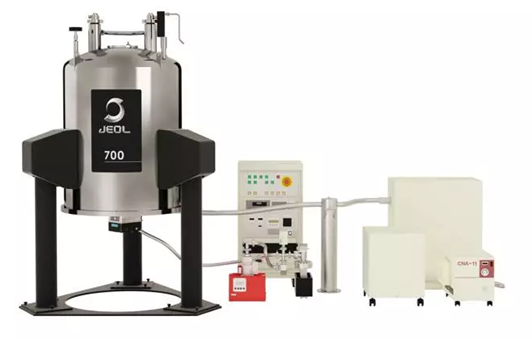
Image Credit: JEOL USA, Inc.
SuperCOOL MARVEL Probe
There are two cooling options for the SuperCOOL MARVEL probe: circulating type, which uses an air-cooled refrigerator, and open type, which uses a liquid nitrogen tank. The open type is better in terms of operating costs because it does not need a refrigerator.
In addition to having a higher continuous operating capacity, the circulating type does not require refrigerant replenishment and has a higher cooling capacity and better sensitivity.
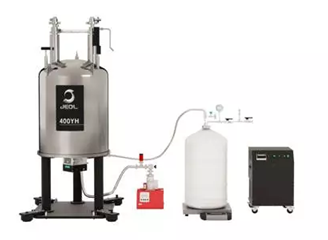
SuperCOOL MARVEL Open. Image Credit: JEOL USA, Inc.
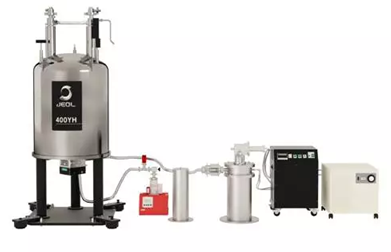
SuperCOOL MARVEL Closed. Image Credit: JEOL USA, Inc.
29Si Background-Free
The 29Si background signal from the probe components is significantly reduced by JEOL cryogenic probes. Glass materials can be measured without a background. Without the sample tube, the background signal was significantly lower, as seen in the spectra below, indicating that the sample tube was the source of the majority of the background signals.
29Si NMR spectra were obtained using a 5 mm PTFE sample tube and the SuperCOOL MARVEL probe. Since there is no background signal at -100 ppm, the high magnetic field side signals are unmistakably verified.
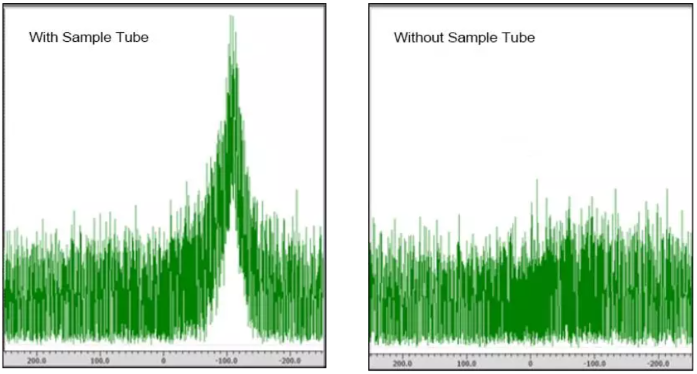
Image Credit: JEOL USA, Inc.
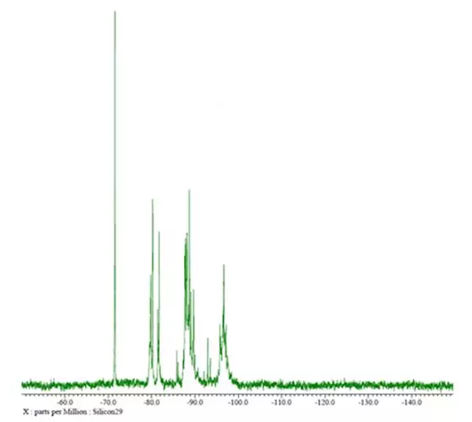
29Si NMR spectrum of 10wt% water glass/D2O. Image Credit: JEOL USA, Inc.
Probe Arm and Probe Lifter
Due to safety concerns, it may be necessary to warm up cryogenic probes to room temperature before manipulating them, because they cannot be manually raised or lowered in their cooled state.
However, people can use the Probe Arm or the Probe Lifter to swap out the UltraCOOL or SuperCOOL MARVEL probe in a cooled state. The UltraCOOL and SuperCOOL MARVEL probes are easily interchangeable with the Probe Arm or the Probe Lifter, even though their design makes them heavier than room temperature probes.
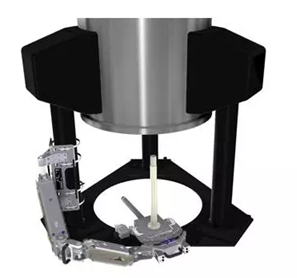
Probe Arm. Image Credit: JEOL USA, Inc.
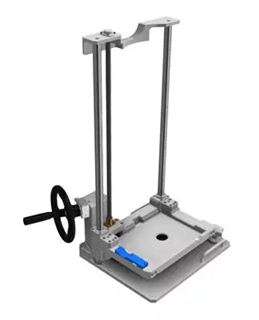
Probe Lifter. Image Credit: JEOL USA, Inc.